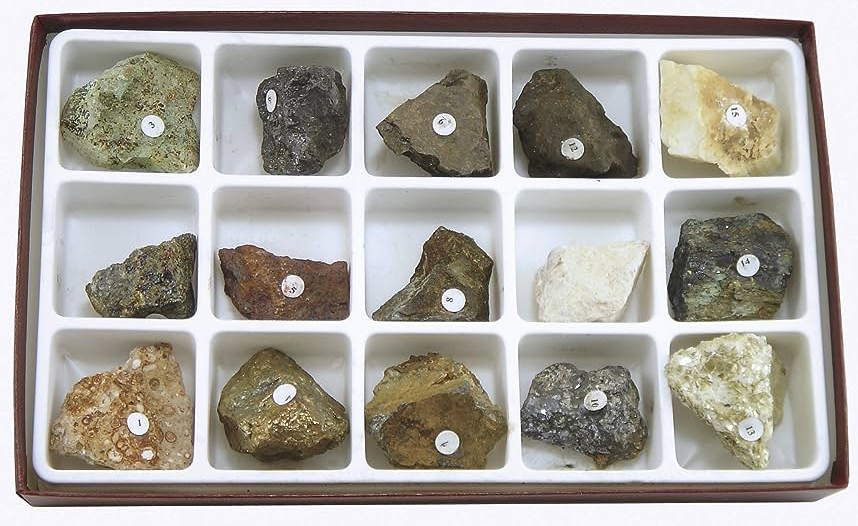ORES & MINERALS TESTING @ BOMBAY TEST HOUSE PVT LTD
Minerals and their Uses
 Every segment of society uses minerals and mineral resources every day. The roads we ride or drive on and the buildings we live learn and work in all contain minerals. Below is a selected list of commonly used metallic and non-metallic minerals, ore minerals, mineral by products, aggregates and rock types that are used to make products we use in our daily life.
Every segment of society uses minerals and mineral resources every day. The roads we ride or drive on and the buildings we live learn and work in all contain minerals. Below is a selected list of commonly used metallic and non-metallic minerals, ore minerals, mineral by products, aggregates and rock types that are used to make products we use in our daily life.
 Aggregates, Aluminium, Antimony, Asbestos, Basalt, Barium, Beryllium, Bismuth, Boron, Bromine, Calcium, Cement, Chromium, Cobalt, Copper, Diamond, Diatomite, Dolomite, Feldspar, Fluorite, Garnet, Germanium, Gold, Granite, Graphite, Gypsum, Halite, Iodine, Iron Ore, Lead, Limestone, Lithium, Magnesium, Manganese, Mercury, Mica, Molybdenum, Nickel, Phosphate rock, Platinum Group Metals (PGMs), Potash, Pyrite, Quartz, Sandstone, Silica / Silicon, Silver, Strontium, Sulfur, Talc, Tin, Titanium, Trona, Tungsten, Uranium, Zeolites, Zinc, Zirconium etc.,
Aggregates, Aluminium, Antimony, Asbestos, Basalt, Barium, Beryllium, Bismuth, Boron, Bromine, Calcium, Cement, Chromium, Cobalt, Copper, Diamond, Diatomite, Dolomite, Feldspar, Fluorite, Garnet, Germanium, Gold, Granite, Graphite, Gypsum, Halite, Iodine, Iron Ore, Lead, Limestone, Lithium, Magnesium, Manganese, Mercury, Mica, Molybdenum, Nickel, Phosphate rock, Platinum Group Metals (PGMs), Potash, Pyrite, Quartz, Sandstone, Silica / Silicon, Silver, Strontium, Sulfur, Talc, Tin, Titanium, Trona, Tungsten, Uranium, Zeolites, Zinc, Zirconium etc.,
The testing protocol for ores and minerals involves various techniques and procedures to determine their composition, quality, and suitability for specific industrial applications. Here are some key aspects of the ores and minerals testing protocol:
- Sample Collection: Samples of ores and minerals are collected from mining sites, processing plants, or stockpiles, ensuring representative sampling techniques to obtain a reliable representation of the entire lot.
- Sample Preparation: The collected samples undergo various preparation techniques such as crushing, grinding, and homogenization to obtain a consistent particle size distribution. This step is important to ensure accurate and reproducible test results.
- Chemical Analysis: Chemical analysis is conducted to determine the elemental composition of the ores and minerals. Techniques such as X-ray fluorescence (XRF), atomic absorption spectroscopy (AAS), or inductively coupled plasma (ICP) analysis are commonly used to quantify the concentrations of various elements present.
- Mineralogical Analysis: Mineralogical analysis helps identify and characterize the mineral composition of the ores and minerals. Techniques such as X-ray diffraction (XRD), scanning electron microscopy (SEM), or optical microscopy are employed to identify the mineral phases and their associations.
- Physical and Mechanical Testing: Physical and mechanical tests are performed to assess the physical properties and mechanical strength of ores and minerals. These tests may include measurements of density, hardness, abrasion resistance, particle size distribution, specific gravity, and moisture content.
- Metallurgical Testing: Metallurgical testing is conducted to evaluate the behavior of ores and minerals during various processing stages. This may involve testing for leaching characteristics, flotation behavior, magnetic properties, or assessing the amenability of ores to specific extraction processes.
- Quality and Specifications: Ores and minerals are often tested against specific quality criteria and specifications, depending on their intended use or market requirements. This may include testing for impurities, moisture levels, or compliance with regulatory limits.
- Reporting: Test results are documented in detailed reports, providing information on the composition, quality, and characteristics of the ores and minerals. These reports are essential for decision-making processes, trade transactions, and compliance with industry standards.
It is important to note that the specific testing protocols and techniques used may vary depending on the type of ore or mineral being analyzed and the specific requirements of the industry or application..
Kinds of Ores:
Ores are rocks or minerals that contain valuable elements or compounds that can be extracted for economic purposes. Here are some of the major types of ores:
- Iron Ore: Iron ores are rocks and minerals from which metallic iron can be extracted. They are used as the primary source of iron for steel production. Common types of iron ore include hematite, magnetite, and taconite.
- Copper Ore: Copper ores are rocks and minerals that contain copper in high concentrations. Copper is widely used in electrical wiring, plumbing, and various industrial applications. Common copper ores include chalcopyrite, bornite, and chalcocite.
- Gold Ore: Gold ores are rocks and minerals that contain gold in economically recoverable amounts. Gold is highly valued for its beauty and use in jewelry, as well as for its industrial applications. Common gold ores include quartz veins or deposits associated with other minerals like pyrite or arsenopyrite.
- Silver Ore: Silver ores are rocks and minerals that contain silver in economically viable quantities. Silver has various applications, including jewelry, photography, and electrical contacts. Common silver ores include argentite and galena.
- Aluminium Ore: Aluminium ores are rocks and minerals that contain aluminum in economically significant amounts. Bauxite is the primary source of aluminum, used in various industries such as transportation, construction, and packaging.
- Lead-Zinc Ore: Lead-zinc ores are rocks and minerals that contain both lead and zinc in economically valuable concentrations. These ores are commonly found together and are used in the production of batteries, alloys, and other applications. Common lead-zinc ores include galena and sphalerite.
- Nickel Ore: Nickel ores are rocks and minerals that contain nickel in economically extractable quantities. Nickel is used in various industries, including stainless steel production, batteries, and electronics. Common nickel ores include pentlandite and garnierite.
- Uranium Ore: Uranium ores are rocks and minerals that contain uranium in concentrations suitable for nuclear fuel production. Uranium is a key element in nuclear power generation. Common uranium ores include pitchblende and uraninite.
These are just a few examples of the major types of ores. Other types of ores include tin, tungsten, titanium, rare earth elements, and more. Each ore type has its own specific mineral composition and extraction methods.
There are thousands of different minerals found on Earth, but they can be broadly classified into several groups based on their chemical composition and crystal structure. Here are some of the major categories of minerals:
- Silicates: Silicates are the most abundant mineral group and make up over 90% of the Earth's crust. They are composed of silicon and oxygen atoms combined with other elements. Examples include quartz, feldspar, mica, and clay minerals.
- Carbonates: Carbonates are minerals that contain the carbonate ion (CO3^2-) combined with metal ions like calcium, magnesium, or iron. Common carbonates include calcite, dolomite, and magnesite.
- Oxides: Oxides are minerals composed of oxygen combined with one or more metallic elements. Examples include hematite, magnetite, and rutile, which are important sources of iron, titanium, and other metals.
- Sulfides: Sulfides are minerals that contain sulfur combined with metal ions like iron, lead, zinc, or copper. Common sulfides include pyrite, galena, sphalerite, and chalcopyrite.
- Sulfates: Sulfates are minerals that contain the sulfate ion (SO4^2-) combined with metal ions. Gypsum, anhydrite, and barite are common examples of sulfates.
- Halides: Halides are minerals that contain halogen elements such as fluorine, chlorine, bromine, or iodine combined with metal ions. Examples include halite (rock salt) and fluorite.
- Native Elements: Native elements are minerals that occur in pure elemental form. Examples include gold, silver, diamond, graphite, and sulfur.
- Phosphates: Phosphates are minerals that contain the phosphate ion (PO4^3-) combined with metal ions. Apatite is the most common phosphate mineral.
- Sulfosalts: Sulfosalts are minerals that contain both sulfur and a metal ion. Examples include tetrahedrite, bournonite, and stibnite.
- Others: There are many other mineral groups, including borates, arsenates, vanadates, and zeolites, each with their own unique composition and properties.
These are just a few examples of the different kinds of minerals found in nature. Each mineral group has its own distinct properties, uses, and geological occurrences.
BTH undertakes majority of testing parameters of Ores & Minerals such as
| Purity | Specific Gravity | Bulk Density | Silica |
| Loss on ignition | Heavy Metals | Moisture | Ash/ Acid insoluble ash |
| Available Lime | Alumina | Iron | Sodium |
| Potassium | Sieve Analysis | Manganese | Oil Absorption |
| Copper | Sulphate | Phosphate | Chloride |
| Iron | Calcium Sulphate | Tin | Lead |
| Nickel | Acid insoluble matter | Metallic iron | Water soluble matter |

Testing
Read More
Inspection
Read More
Certification
Read MoreTesting Services
- Drugs & Pharmaceutical Testing
- Cosmetics & Essential Oils Testing
- Medical Devices Testing
- Ayush - Ayurvedic Drug Testing
- Food Products Testing
- Agri Commodities Testing
- Fertilizers and Soil Testing
- Animal Food & Feed Testing
- Water - Drinking Water & Effluent Water Testing
- Industrial Oils and Lubricants & Petroleum Products Testing
- Coal & Coke and Solid Fuels Testing
- Ores & Minerals Testing
- Metals & Alloys Testing
- Plastics, Polymer, Rubber & Rubber Products Testing
- Resins & Adhesives Testing
- Paints, Varnish, Pigments & Surface Coating Testing
- Glass & Ink, Paper & Pulp Testing
- Industrial & Fine Chemicals Testing
- Dyes, Acids and Solvents Testing
- Soaps, Detergents & Toiletries Testing
- Packaging & Packaging Products Testing
- Gold & Silver Assaying & Hallmarking
- Cement, Concrete & Building Materials Testing
- Pollution and Environmental Studies
- Microbiological Assays. Etc.,









